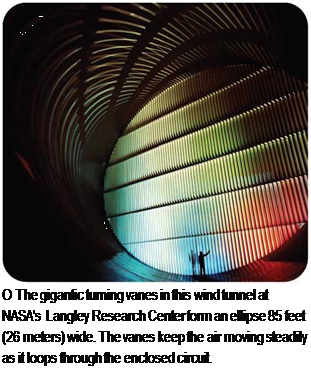The First Wind Tunnels
The first wind tunnel was designed by the British engineer Francis Herbert Wenham and it was built by John Browning at Greenwich, England, in 1871. The wind tunnel was 12 feet (about 4 meters) long and 18 inches (45 centimeters) high and wide. Air could be blown through it at up to 40 miles per hour (64 kilometers per hour).
The swirling, unsteady airflow inside the first wind tunnels made it very difficult to obtain reliable measurements. The first wind tunnel to provide useful aerodynamic data for designing an actual aircraft was built by Orville and Wilbur Wright in 1901.
The brothers were disappointed with the performance of the early gliders they had built. They needed a way of testing different shapes and angles of wings instead of relying on data provided by other people. The Wrights tried testing small model wings fixed to a bicycle, but they really wanted to test each wing in a controlled environment with exactly the same airflow. So Orville Wright built a
О While many wind tunnels use models to test new designs, this wind tunnel in the 1950s could hold full-scale aircraft.
![]()
 TECH^TALK
TECH^TALK
PARTS OF A WIND TUNNEL
A wind tunnel has five main parts:
• The drive section pushes air through the tunnel.
• The settling chamber straightens the airflow.
• The contraction zone speeds up the air.
• The test section contains the object to be studied.
• The diffuser slows the air down.
V.
wind tunnel from an old box. It was only 18 inches (46 centimeters) long. A fan driven by their workshop engine blew air through the box, and a glass window on top showed what was happening inside.










